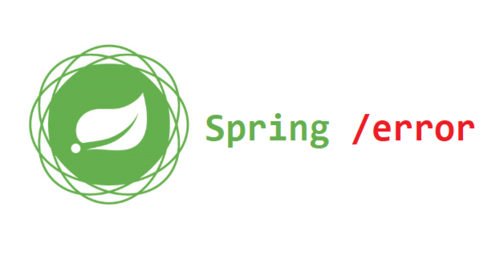Spring 中异常处理的各种姿势

1. 前言
统一的异常处理对于应用的重要性不言而喻。今天我们来介绍一下 Spring 如何来进行统一的 Rest 异常处理。同时我们也会简单比较一下它们之间的优劣。
2. @Controller 结合 @ExceptionHandler
在控制器中声明一个方法然后用 @ExceptionHandler 注解标记即可:
@Controller
@RequestMapping("/test")
public class TestController {
@RequestMapping("/err")
@ResponseBody
public Object demo1(){
int i = 1 / 0;
return new Date();
}
@ExceptionHandler({RuntimeException.class})
public ModelAndView fix(Exception ex){
System.out.println(ex.getMessage());
return new ModelAndView("error",new ModelMap("ex",ex.getMessage()));
}
}复制代码
优点:
- 优先级最高。
-
@ExceptionHandler标记的方法返回值类型支持多种。可以是视图,也可以是json等。
缺点:
- 一个
Controller中的@ExceptionHandler注解上的异常类型不能出现相同的,否则运行时抛异常。 - 需要显式的声明处理的异常类型。
- 作用域仅仅是该
Controller并不是真正意义上的全局异常。如果要想作用于全局需要将其放入所有控制器的父类中。
3. @ControllerAdvice 结合 @ExceptionHandler
这是 2. 的改进型,通过定义 @ControllerAdvice 类并在方法上标记 @ExceptionHandler ,达到了全局异常处理的目的:
@ControllerAdvice
public class TestController {
@ExceptionHandler({RuntimeException.class})
public ModelAndView fix(Exception ex){
System.out.println(ex.getMessage());
return new ModelAndView("error",new ModelMap("ex",ex.getMessage()));
}
}复制代码
优点:
- 全局的异常处理。
- 完全控制响应的主体以及状态码
- 将多个异常映射到同一方法,以一起处理,并且它充分利用了更新的 Restful ResponseEntity 响应
缺点:
- 一个
Controller中的@ExceptionHandler注解上的异常类型不能出现相同的,否则运行时抛异常。 - 需要显式的声明处理的异常类型。
一般情况下也建议使用该方式进行异常处理。大多数情况下都是兼容的。
4. HandlerExceptionResolver 接口
实现 HandlerExceptionResolver 接口,这里我们继承其抽象实现 AbstractHandlerExceptionResolver :
@Component
public class RestResponseStatusExceptionResolver extends AbstractHandlerExceptionResolver {
@Override
protected ModelAndView doResolveException(
HttpServletRequest request,
HttpServletResponse response,
Object handler,
Exception ex) {
try {
if (ex instanceof IllegalArgumentException) {
return handleIllegalArgument((IllegalArgumentException) ex, response, handler);
}
//todo more exception
} catch (Exception handlerException) {
//todo
}
return null;
}
private ModelAndView
handleIllegalArgument(IllegalArgumentException ex, HttpServletResponse response)
throws IOException {
response.sendError(HttpServletResponse.SC_CONFLICT);
String accept = request.getHeader(HttpHeaders.ACCEPT);
//todo more response
return new ModelAndView();
}
}复制代码
优点:
- 这是一个全局的异常处理器。
- 这种方式全局异常处理返回
JSP、velocity等模板视图比较方便。 - 支持多种格式的响应,虽然覆写的方法返回的是
ModelAndView但是因为参数中有HttpServletResponse, 我们可以利用它来进行定制响应结果。例如,如果客户端要求输入application / json,那么在出现错误情况时,我们要确保我们返回一个以application / json编码的响应。
缺点:
HttpServletResponse
5. Spring Boot 中的异常处理
如果你用的框架是 Spring Boot 。 我们还可以用它独特的处理方式。优点是屏蔽了低级的API,缺点也比较明显,无法捕捉到具体的异常。
5.1 实现 ErrorController
Spring Boot在默认情况下,提供了 /error 映射来处理所有错误,在 Servlet 容器里注册了全局的错误页面( Whitelabel Error Page )并返回客户端。通过实现 ErrorController 接口并注册为 Bean 。这里不再举例。可参考 BasicErrorController 。
5.2 添加 ErrorAttributes
我们也可以添加 ErrorAttributes 类型的 Bean 来替换替换默认的异常处理。
@Component
public class MyCustomErrorAttributes extends DefaultErrorAttributes {
@Override
public Map<String, Object> getErrorAttributes(
WebRequest webRequest, boolean includeStackTrace) {
Map<String, Object> errorAttributes =
super.getErrorAttributes(webRequest, includeStackTrace);
errorAttributes.put("locale", webRequest.getLocale()
.toString());
errorAttributes.remove("error");
//todo your business
return errorAttributes;
}
}复制代码
5.3 继承基类 BasicErrorController
Spring Boot自动配置还提供了实现 ErrorController 接口异常处理的基类 BasicErrorController ,默认是处理 text/html 类型请求的错误,可以继承该基类自定义处理更多的请求类型,添加公共方法并使用 @RequestMapping 注解的 produce 属性指定处理类型。
@Component
public class MyErrorController extends BasicErrorController {
public MyErrorController(ErrorAttributes errorAttributes) {
super(errorAttributes, new ErrorProperties());
}
@RequestMapping(produces = MediaType.APPLICATION_XML_VALUE)
public ResponseEntity<Map<String, Object>> xmlError(HttpServletRequest request) {
//todo your business
}
}复制代码
6. Spring 5 的 ResponseStatusException
另外在最新的 Spring 5 中你还可以通过 抛出 ResponseStatusException 异常来进行处理。
好处:
- 使用比较方便
- 一种类型,多种状态代码:一种异常类型可以导致多种不同的响应。与@ExceptionHandler相比,这减少了紧密耦合
- 我们将不必创建那么多的自定义异常类
- 由于可以通过编程方式创建异常,因此可以更好地控制异常处理
缺点:
- 没有统一的异常处理方式,强制执行某些应用程序范围的约定更加困难
- 可能会有大量的重复代码。
7. 总结
我们对常用的、不常用的 Spring 处理异常的方式进行了总结和优劣上的分析。 相信你可以从中找到适合你的处理方式。如果对你有用请帮忙点一个赞,您的鼓励,我的动力!
关注公众号:Felordcn获取更多资讯
个人博客:https://felord.cn












![[HBLOG]公众号](https://www.liuhaihua.cn/img/qrcode_gzh.jpg)

